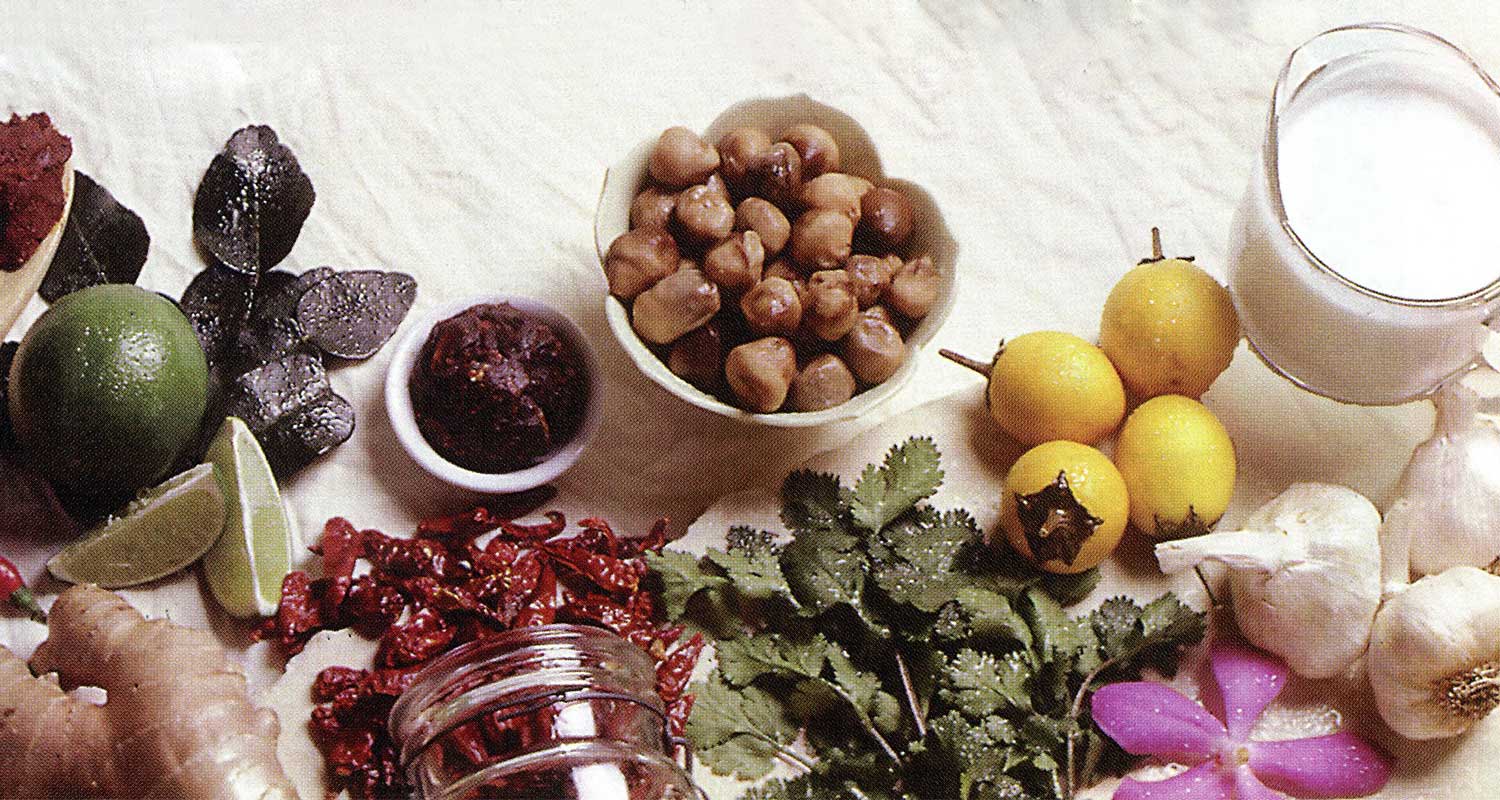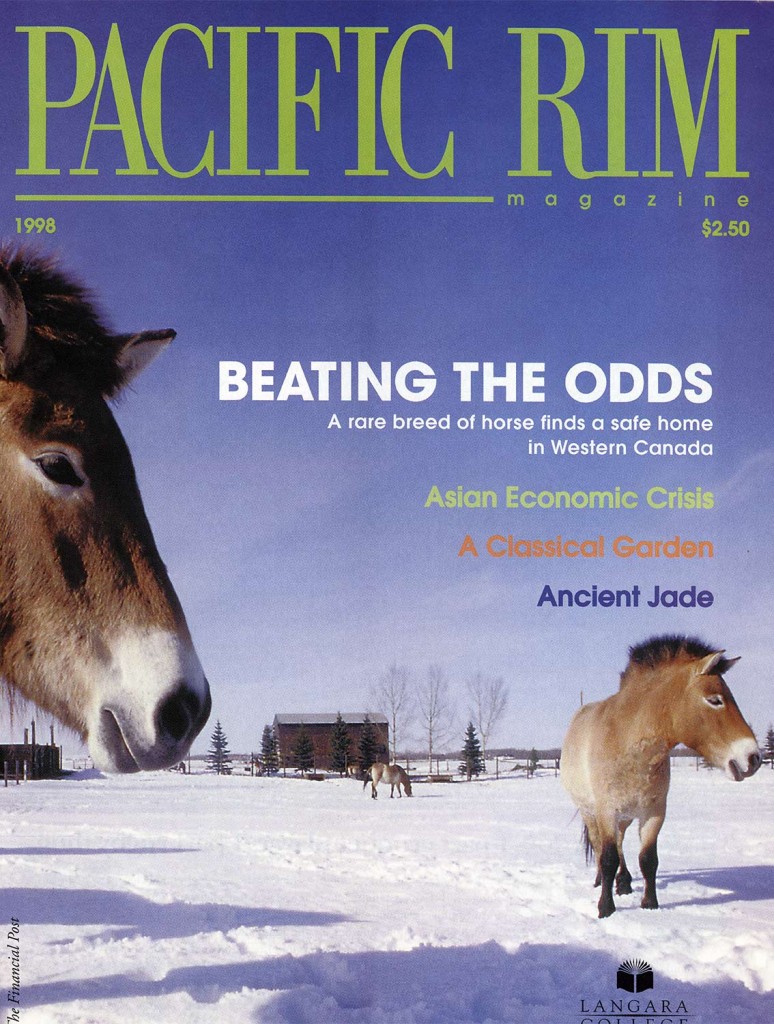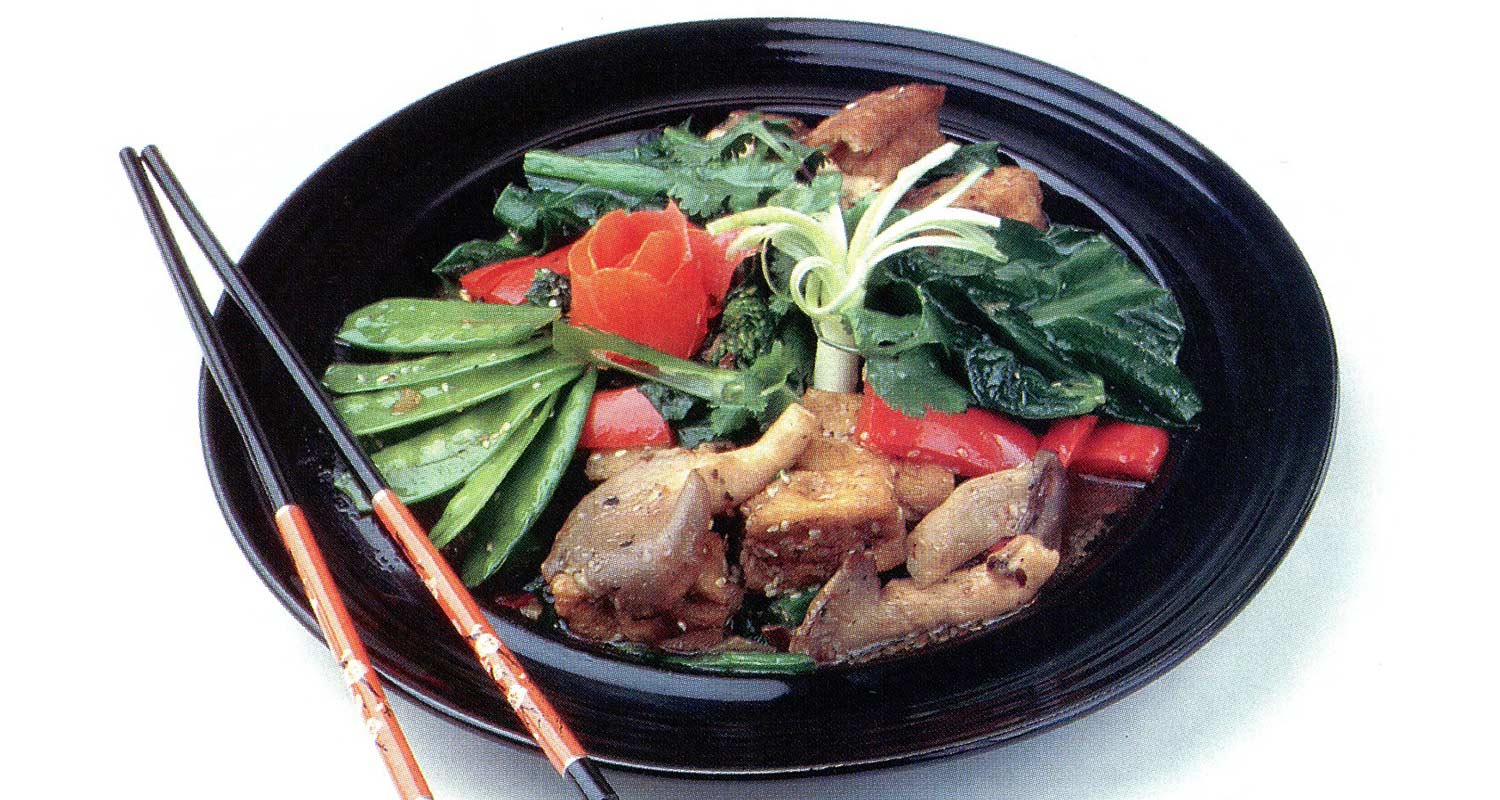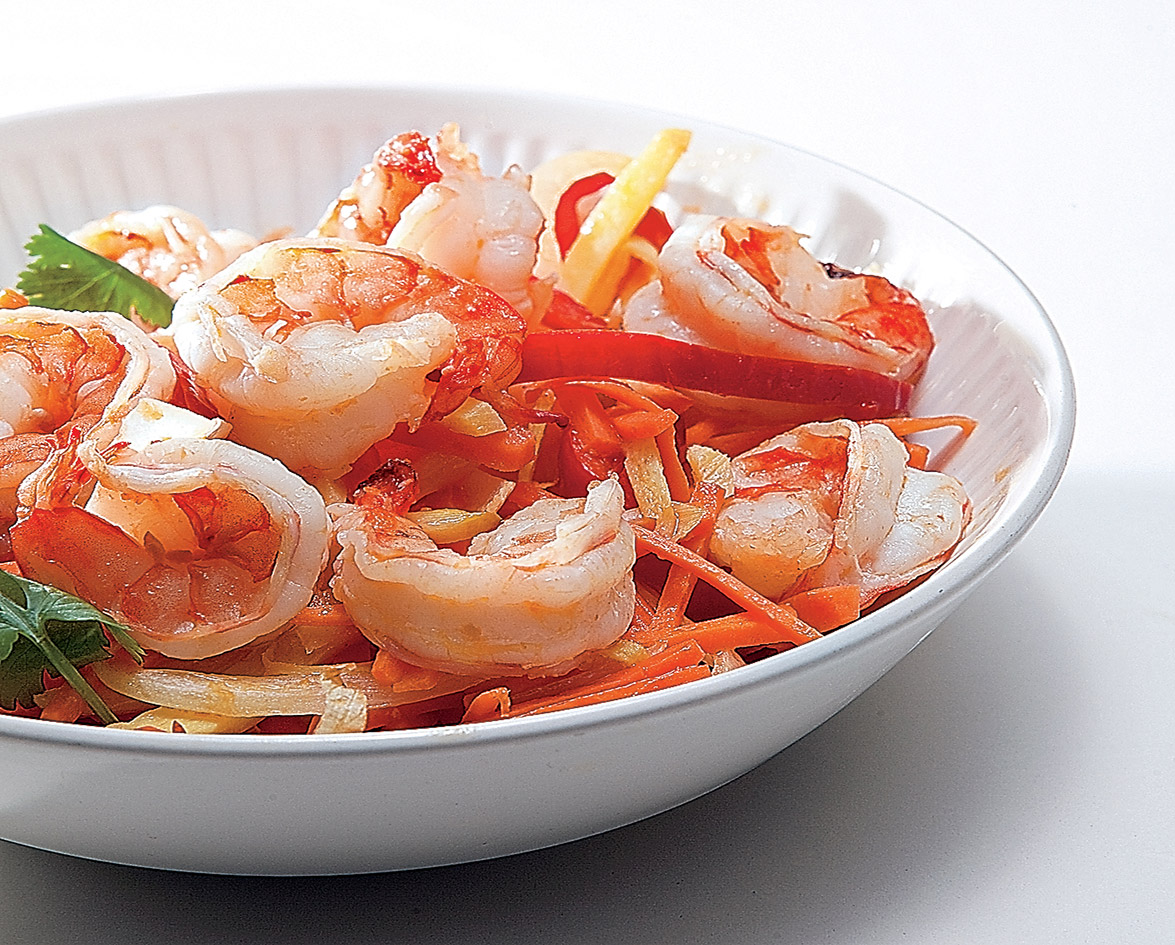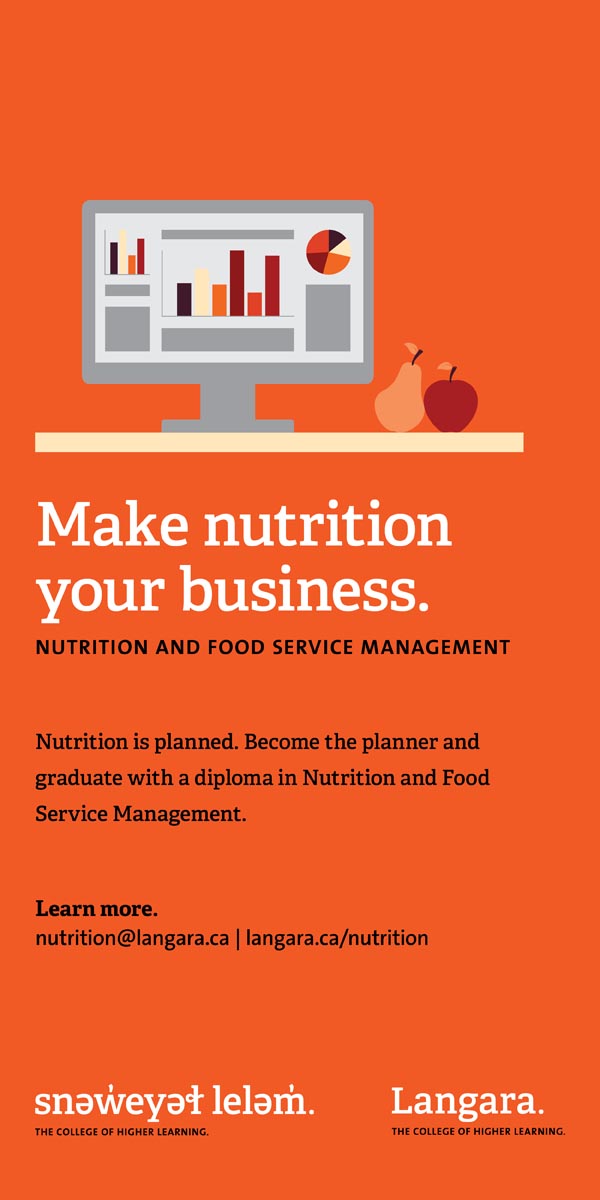The complexity of Thai food distinguishes it from other Asian cuisines. Thai cooks strive to whet the appetite with a balance of salty, sweet, sour tang and fiery heat. These rich flavours complement wholesome ingredients such as vegetables, seafood, chicken, lean beef, noodles and rice, all cooked quickly to preserve colour, crunch and flavour, making Thai fare a healthy choice.
If you don’t know the ingredients, Thai cooking can be a little intimidating. Lime leaves, lemongrass, fish sauce, shrimp paste, tamarind paste, galangal, and coconut milk are just a few of the items Thai recipes will ask for. These and other strange and enticing flavours are integral to Thai cuisine.
In the following glossary, the ingredients found in every Thai pantry are de-mystified. We’ll also suggest a few places in Vancouver for purchasing these staples. So select your menu, make your shopping list and soon you will be able to impress your friends with steaming classics such as Gaeng Keow Wan Gai (chicken in an aromatic green curry sauce), or Satay with Nam Jim Tua (grilled skewered meat served with a sweet, velvety peanut sauce), and the famous Tom Yam Goong (spicy prawn soup). If you come off as pretentious, no one will care after the first bite.
The Thai Pantry
Basil, Thai
Although there are several varieties of Thai basil, North American basil makes a fine substitute. Easy to grow at home, basil mellows and unifies the many flavours of Thai food. Basil must be handled gently to avoid bruising. Chop when dry otherwise, it will turn mushy.
Chili Peppers
People say chili peppers are addictive; the more you eat, the more you want and the hotter you want them. The colours of fresh chilies (red, green and yellow) have no bearing on taste, just aesthetics. Select smaller peppers for heat and larger ones for a milder flavour. Dried chilies are widely available and can be soaked in water for ten minutes before use. To prepare, cut the pepper in half lengthwise and scrape out the seeds and membrane; this is where most of the heat is concentrated. Mince the peppers as finely as possible. When finished, wash chopping board, knives and especially your hands before you accidentally rub chili juice in your eye.
Cilantro
Sometimes called coriander or Chinese parsley, fresh cilantro is widely available. In Thai cuisine, cilantro leaves flavour stir-fries, sauces and curries, while the roots are pounded for marinades and curry pastes.
Coconut Milk
A very important ingredient, coconut milk is used in curries, soups, sauces and desserts. Choose a brand that is free of preservatives. If you are concerned about cholesterol, you may prefer to try a light brand of coconut milk. If you require coconut cream, it can be skimmed from the top of refrigerated coconut milk.
Curry Paste
Although the flavours are essentially the same, curry paste comes in three different colours. Typical curry paste combinations are: red for beef, green for seafood and chicken, yellow for fish. Ready-made curry pastes are a combination of chilies, garlic, lemongrass, galangal, cilantro, shallot, salt, kaffir lime leaves, shrimp paste and spices. To make this paste at home, grind the ingredients together with a mortar and pestle.
Curry Powder
Many brands of this combination of spices are available. Fresh is best, so if your curry powder has been sitting in a cupboard for a long time, you may want to replace it. If you can’t smell it, you won’t taste it (this is true for all spices).
Dried Shrimp
Dried shrimp smells terrible, but like fish sauce, the flavour is salty and rich. Select shrimp that are still slightly soft and pink. Store in a bag in the refrigerator to reduce odour.
Fish Sauce
You will never see a salt shaker on a Thai table. Fish sauce is used to salt flavour food, much the same way soy sauce is used in Chinese cooking. Fish sauce is made from anchovies and though the smell may seem strange, the flavour is rich and essential to Thai cooking.
Eggplants, Thai
Eggplants grown in Thailand are available in many sizes and colours such as yellow (pictured), white, green and purple. If you cannot find Thai eggplants, they can be substituted with any eggplant your local grocer has in stock.
Galangal
Galangal looks like pale yellow ginger root, but its sour tang makes it quite different. Galangal can be purchased dried or fresh. If you buy dried, soak it in hot water an hour before using.
Garlic, Thai
Thai garlic is smaller and more tender than what North Americans are used to. Regular garlic can easily be substituted if you are unable to find Thai garlic. If it has started to sprout, throw it out. Sprouted garlic has lost most of its flavour.
Ginger
Commonly used in many cuisines, this root is readily available and frequently used in Thai cuisine.
Kaffir Lime Leaves
These forest green leaves give off a rich lime perfume. They are sold on long branches and the leaves can be plucked and frozen. Each leaf is shaped like a figure eight, so don’t tear off the top half thinking it is one leaf. To use in recipes, cut each leaf into thin strips, then mince finely. If you are unable to find lime leaves, grated lime rind can be substituted.
Lemongrass
These tall, slender stalks smell like lemons. Dry and woody, the outer layers of each stalk must be peeled away to reveal softer flesh. The base half of the stalk is best for cooking. Chop it finely. The flavour of lemongrass infuses soups and sauces, but remember to pick it out before serving because it is not meant to be eaten.
Lime Juice
Nothing compares to the clean, citrus scent of lime. Don’t buy the bottled stuff! Limes are cheap and you will have much better results if you take the time to squeeze the fresh juice.
Palm Sugar
By the time this sugar arrives in North America, it is rock hard and requires pounding or grating to break it up. Brown sugar is a good substitute and will save a lot of unnecessary trouble.
Rice, Thai
Thai rice is also called Jasmine rice. Because its fragrance is subtle, Thai rice does not require salt. Before cooking, rinse the rice several times to ensure that it turns out fluffy. The easiest way to get perfect rice is to make it in a rice cooker.
Rice Noodles
Rice noodles vary in thickness. When making spring rolls you will want to use a very thin noodle (vermicelli) and a thicker one for dishes such as Pad Thai (see recipe at right). Before using, soak the noodles in hot tap water for twenty minutes, then drain.
Straw Mushrooms
Available only in cans on this side of the Pacific, straw mushrooms are yummy and their slippery, slightly crunchy texture enhances any dish. If preferred, fresh button mushrooms can also be used.
Tamarind Paste
This paste comes from the seed pod of a tamarind and has a tart, fruity flavour. The paste, usually too hard to work with, softens when soaked in hot water. This is also how you make tamarind juice- just strain off the pulp.
Where will I find it?
In Vancouver, ingredients for Thai food are widely available in local stores and supermarkets. There are many Asian food markets that carry much of what has been described here. One popular place to buy these ingredients is the South China Seas Co. in the Granville Island Public Market, 1689 Johnston Street; this is also a good place to find Thai cookbooks, although these are available at most bookstores. A less expensive one-stop shopping venue is Produce City, located at 3277 Cambie Street. Or try Bonanza Market, situated at 265 Hastings Street in Chinatown. Bonanza carries all the staples of a Thai pantry and produce such as lemongrass, Thai basil, kaffir lime leaves and fresh galangal.
What should I make?
A traditional Thai meal consists of soup, a curry dish, a fried meat dish, rice and a salad. In Thailand, satays and noodle dishes are popular snack foods, but Westerners enjoy them as delicious appetizers and side dishes.
Thais eat their food with a spoon and a fork-no chopsticks in Thailand. Knives are not used, which means food is always served bite sized. Skewered food, such as satay, are eaten right off the skewer. Fresh fruit or fried banana served with coconut ice cream finish off a meal nicely.
As you experiment with recipes, you will discover what your favourite ingredients are and start varying proportions to your taste. Thai cooking is not an exact science and substitutions are easily made.
Enjoying exotic food you once believed could only be found in a Thai restaurant is not only economical, but deeply satisfying. So invest in a good Thai cookbook or borrow one from the library, purchase a mortar and pestle and stock up your pantry.
Chicken in Green Curry (Gaeng Keow Wan Gai)
2 tablespoons vegetable oil
1 1/2 tablespoons of green curry paste
4 kaffir lime leaves, minced finely
3 cups coconut milk
2 tablespoons fish sauce
2 teaspoons sugar (or to taste)
500 grams chicken, cut into small pieces
10 fresh basil leaves, chopped finely
In a wok or a large saucepan, briefly fry the vegetable oil, curry paste and the lime leaves. Add the coconut milk, fish sauce and sugar. Bring to boil.
Add chicken and reduce to simmer for at least twenty minutes. When the chicken is cooked and the sauce has reached desired consistency, stir in basil leaves.
Serve with rice. Serves 4





